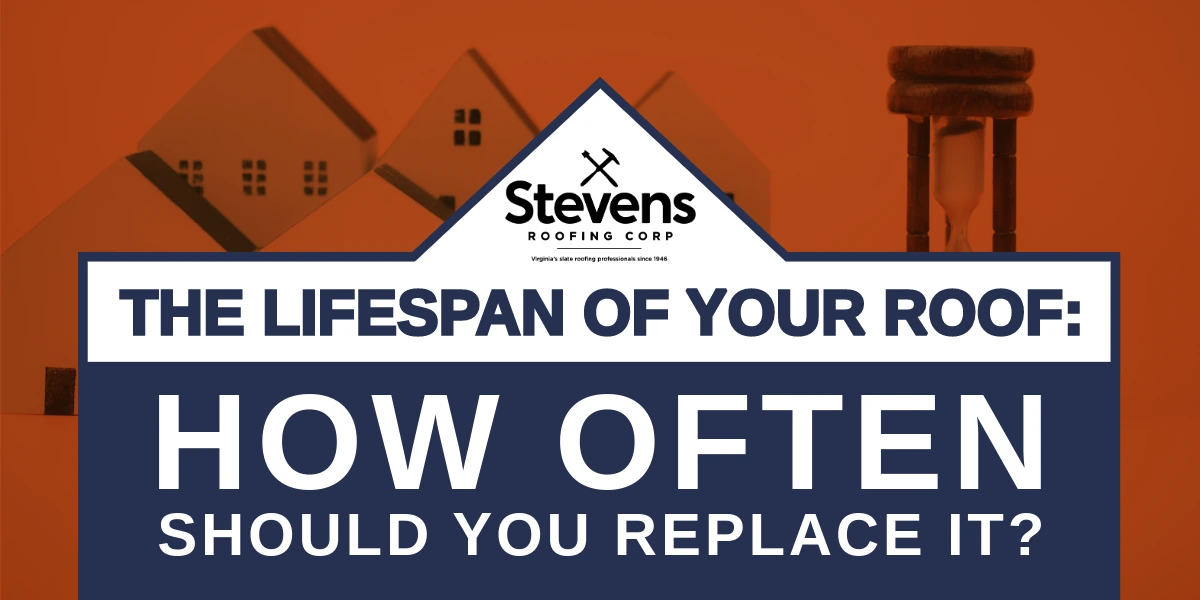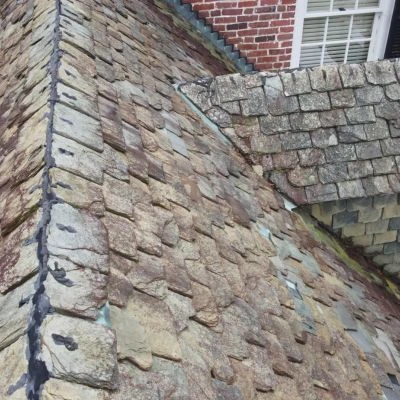The Lifespan of Your Roof: How Often Should You Replace It?

How often do roofs need to be replaced? This is a quintessential question for every homeowner to ask themselves. No matter what type of roof you own, it will reach its end of life. When it is over, can you recognize the signs that it’s time for a roof replacement? Or is it unclear to you what determines its demise?
Factors To Consider
Replacing a roof involves taking a measured but deliberate approach to evaluating critical factors determining your roof’s situation.
The Age Of Your Roof
Each type of roof has an expected lifespan. As a homeowner, you should diligently measure your roof’s age against the need for near-term replacement. You also will want to consider the expected lifespan of your next roof.

The Condition Of Your Roof
Regardless of your roof’s age, if it has suffered meaningful damage, it may require replacement sooner rather than later. Delaying a replacement will create a cascading effect where one issue multiplies into another. Avoid catastrophic loss by installing a new roof.
The Existence Of Interior Damage
If the inside of your home shows signs of unexplained damage, such as water staining or peeling paint, a leaky roof may be the culprit. At the very least, you should involve a reputable roofing contractor to perform a thorough roofing inspection.
The Material Used To Construct Your Roof
One critical issue in assessing the need for a roof replacement involves considering your roof’s type. A roof constructed of a longer-lasting, more durable material, such as metal or steel, will have a much lower need for routine replacement than one covered with standard asphalt shingles.
The Possibility Of Moss, Mold, or Mildew Growth
No homeowner wants to deal with a moldy home. Any such development clearly indicates that the house has succumbed to moisture intrusion. Most likely, water has penetrated through the roof and settled in a dank environment where this unwelcome growth can thrive.
The Time Remaining Before You Plan To Sell Your Home
As a homeowner, if you are interested in putting your house on the market in the next 1-5 years, you should consider the current condition of your roof, including its curb appeal. Replacing a roof may add substantive value to your home and make it more marketable.
Replacing A Roof: The Roofing Material Makes The Difference
The type of roofing material plays a determining role in your roof’s expected lifespan. Naturally, longer-lasting materials are less susceptible to decomposition and will require less frequent replacement. As a general rule of thumb, here are typical life cycles for commonly-installed roofing materials:
- Asphalt shingle: 20-30 years
- Clay tile: 40-80 years
- Composite shingle: 10-15 years
- Concrete tile: 50-100 years
- Metal: 40-80 years
- Rubber: 30-50 years
- Slate tile: 50-100 years
- Wood shake or shingle: 30-50 years

Steps To Take When Considering A Roof Replacement
As an attentive, discerning homeowner, you want what is best for your home. You have no desire to compromise or unreasonably delay areas that require further examination. This evaluation process mandates you approach it rationally and efficiently to ensure an informed decision regarding what actions to take next.
You don’t know what you don’t know. Trustworthy roofing companies have your best interests at heart, won’t give you the runaround. On the contrary, they stake their reputation in providing guidance that sets you in the right direction.
Step 1: Contact A Reputable, Established Roofing Contractor To Ask Questions
You don’t know what you don’t know. Trustworthy roofing companies have your best interests at heart, won’t give you the runaround. On the contrary, they stake their reputation in providing guidance that sets you in the right direction.
Step 2: Involve A Qualified Roofing Contractor To Perform A Comprehensive Inspection
If you suspect your roof needs to be addressed, thoroughly evaluating your roofing system makes sense. In fact, this step is necessary. Don’t involve just any roofing company. Choose one with verified and certified home and roof inspection credentials.
Step 3: Review The Roofing Contractor’s Inspection Report And Findings
All established roofing companies understand the importance of providing detailed information to demonstrate the roof’s condition. This inspection process includes a written report, photographic proof, and recorded video to explain their findings.
Step 4: Take Proactive Action To Address Your Roofing Issues
Supplied with the necessary information to make an informed decision, a roofing company will offer its best recommendations. Repairing the existing roof might be the appropriate course of action in some cases. Otherwise, it may require a replacement.
Identifying The Ideal Roofing Professional For A Roof Replacement
For homeowners in the Richmond and Norfolk, VA areas, Stevens Roofing offers the highest quality roofing products and services. We are committed to exceptional customer service from the first time you contact us to the completion of your project. If you have questions for us regarding your upcoming roofing project or would like to schedule a complimentary consultation to receive a free estimate, contact Stevens Roofing today.


